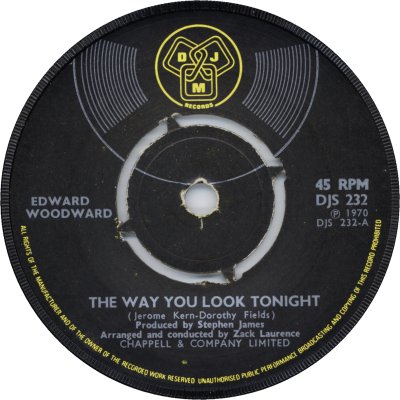

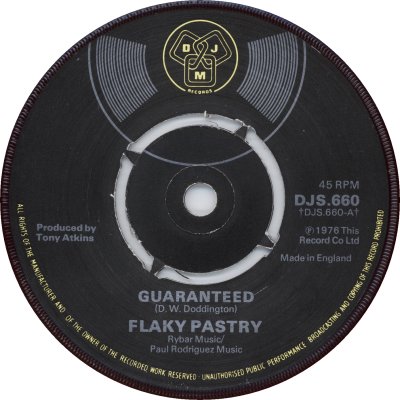
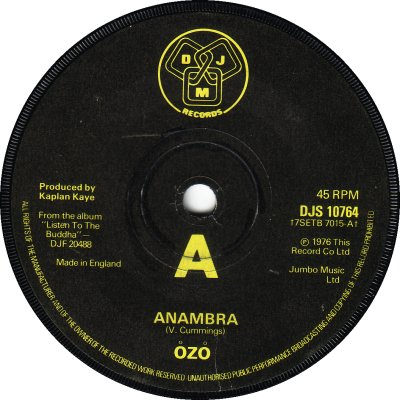
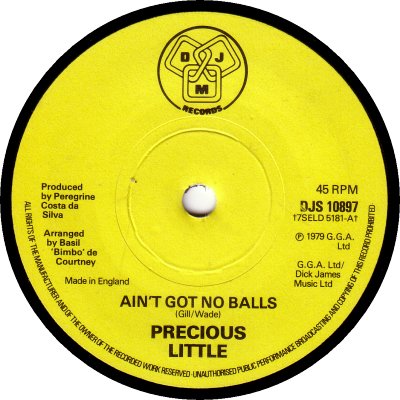
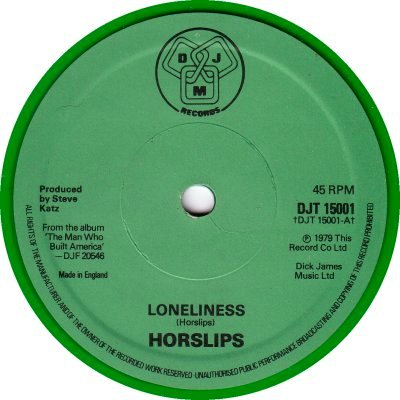
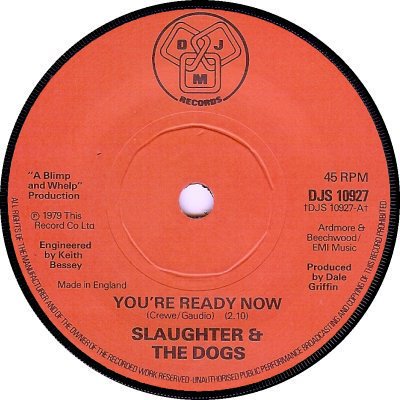

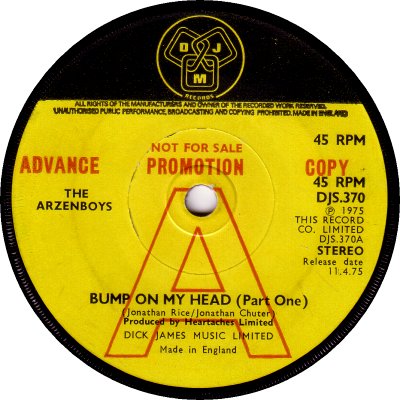
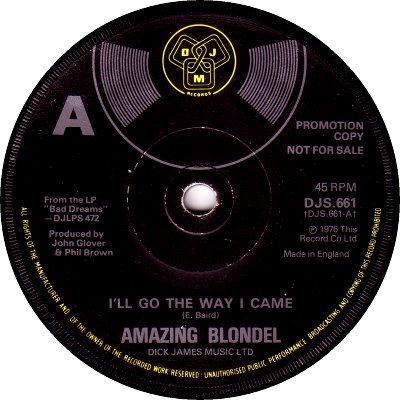

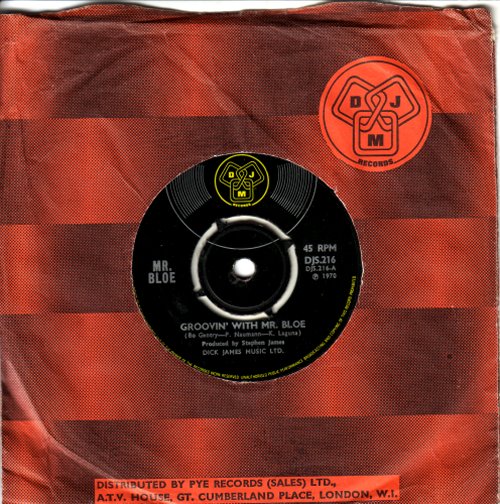
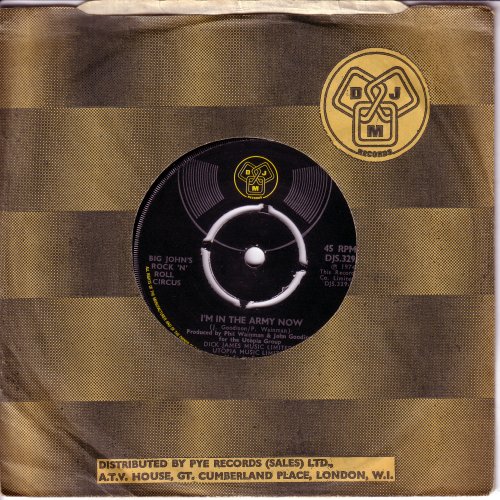
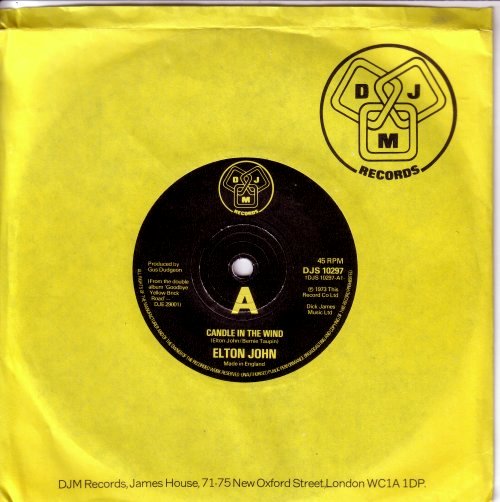
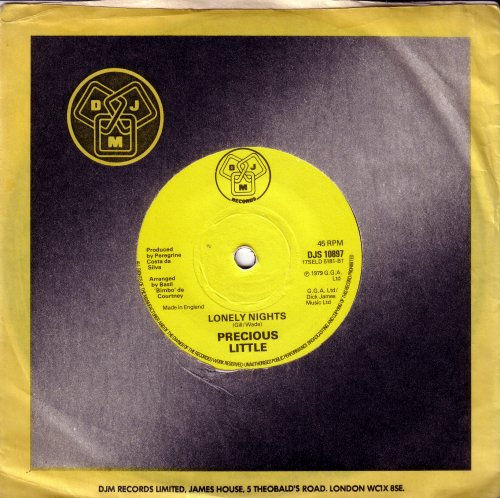
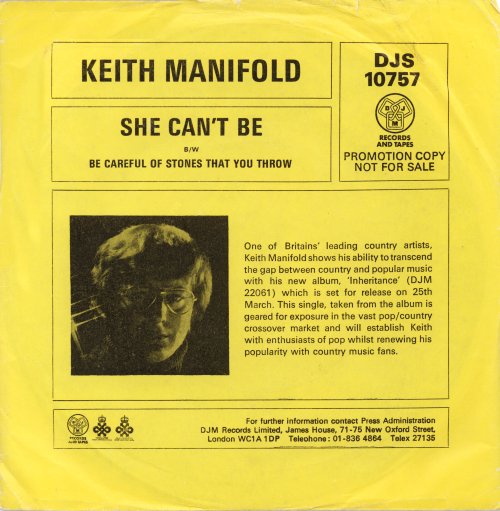

The DJM label was started by publisher Dick James early in 1969, at the request of his son Stephen. Stephen James's independent production concern This Record Company had been placing product with Philips via a tape lease deal, but because of what he saw as a lack of support from Philips he turned to his father and said that he wanted to set up his own label so that he could release whatever he thought was appropriate and give it the kind of support that it deserved ('Music Week', 9th March 1974). Dick James obliged by setting up the DJM label; Stephen was in charge of it, and he remained the driving force behind it. 'Record Retailer' of the 15th of January 1969 reported that a five-year pressing and distribution deal had been signed with Pye, and DJM's first single, Dave Sealey's 'It Takes A Thief' (DJS-201) duly came out on the 28th of February. For a while DJM ran alongside Page One Records (q.v.), Dick James's joint venture with manager / producer Larry Page, but Page sold his 50% interest in Page One to James with effect from the 31st of July 1969. Stephen James took over responsibility for that label, too, but it was gradually wound down in order to streamline the organization, and in November 1970 the artists on its roster were transferred to DJM. DJM registered an early Top 3 record with Mr. Bloe's 'Grooving With Mr. Bloe' (DJS-216; 1970), but the artist who sold most records for the company was undoubtedly Elton John, who had more than a dozen hit singles on that label during the period 1971-76. After Elton departed, to his own Rocket Records (q.v.), things quietened down for DJM. The occasional single squeezed into the charts - for example a novelty record by Jasper Carrott in 1975, a couple of Disco efforts from Johnny 'Guitar' Watson in 1976-77, and a couple more from the RAH Band in 1980-81 - but the days of million-sellers were over. Dick James died in 1986, and the label's catalogue was bought by PolyGram.
DJM records were handled by Pye from 1969-76 (1); during this period they were numbered in a DJS-200 series, which evolved into the 300s and 400s before leaping from DJS-411 to DJS-601 in August 1975 for some reason. The label design remained basically the same throughout the Pye years, though on four singles (DJS-297-300) issued in March or April 1974 the yellow colour was replaced by silver (2), the normal appearance returning with DJS-301 and with what are presumably latter pressings of DJS-297. In the spring of 1976 the artist name migrated from 9 o'clock to 6 o'clock and grew in size (3). 'Music Week' of the 22nd of May 1976 revealed that DJM was moving to CBS for pressing and distribution with effect from the 1st of July. The CBS computer was unable to handle the DJM catalogue numbers in their old form, so they were adapted. The singles numbers kept their old prefix but gained a preliminary '10'; they stayed in series, however, and DJS-682 was followed by DJS-10683. Some popular Pye-era singles were reissued with a '10' in front of their old catalogue numbers; for example DJS-297 reappeared as DJS-10297. At the handover the designs of the label (4) and the company sleeve (14) also changed - the bright yellow sleeves and pringting were a "conscious move to brighten the image of the label", according to a quote from Stephen James in the article. This new design saw the decade out, though at the start of 1979, with the release of DJS-10888, the yellow-on-black colouring was reversed (5). A green label, in the standard design (6), was used on records by Irish band Horslips, and a red one (7) for Slaughter & The Dogs; other artists such as Moon Martin and Rikki & The Last Days Of Earth had their own dedicated designs. The orange label (8) seems to have been only used on the reissue of John Inman's 'Teddy Bears Picnic' (DJS-10645) and, appropriately enough, a 1979 single by Richard Orange, 'Supernatural' (DJS-10914), which was pressed on orange vinyl.
Pye Group promo singles generally had labels with a yellow-and-black colour scheme; initially DJM went along with this (9) but from the summer of 1974 overprinted stock ones (10) were mixed in among the yellows, replacing them entirely from August 1975. There were no promo labels as such during the first part of the CBS era; special promo sleeves with artist details on them (16) continued to be used, as they had been during the final few months of the Pye period, but they had ordinary stock singles in them. The 'A' on the appropriate side of these singles (4) is just for easy identification, it doesn't indicate a promo copy. The artist-specific sleeves seem to have been discontinued from September 1977 in favour of a generic promo sleeve (17). Promo markings on the labels finally came into use in or around April 1979 (11). During the Pye years DJM had a sister-label, Jam (q.v.); after the move to CBS several singles on the Weekend label shared DJM's numbering series, as did one on Hilltak (q.v. both). Billboard of the 11th of January 1975 reported that DJM was going to be operating its own sales force from the beginning of May of that year, but the arrangement seems to have had mixed results at best: 'Music Week' of the 22nd of July 1978 reported that the force had been shut down and that the company would be relying on CBS in that area in addition to its current manufacturing and distribution agreement. The DJM discography is rather large, so I have put it on a separate page, here. Thanks to Robert Bowes for the scans of the orange and the red labels and of the yellow promo.


Copyright 2006 Robert Lyons.

